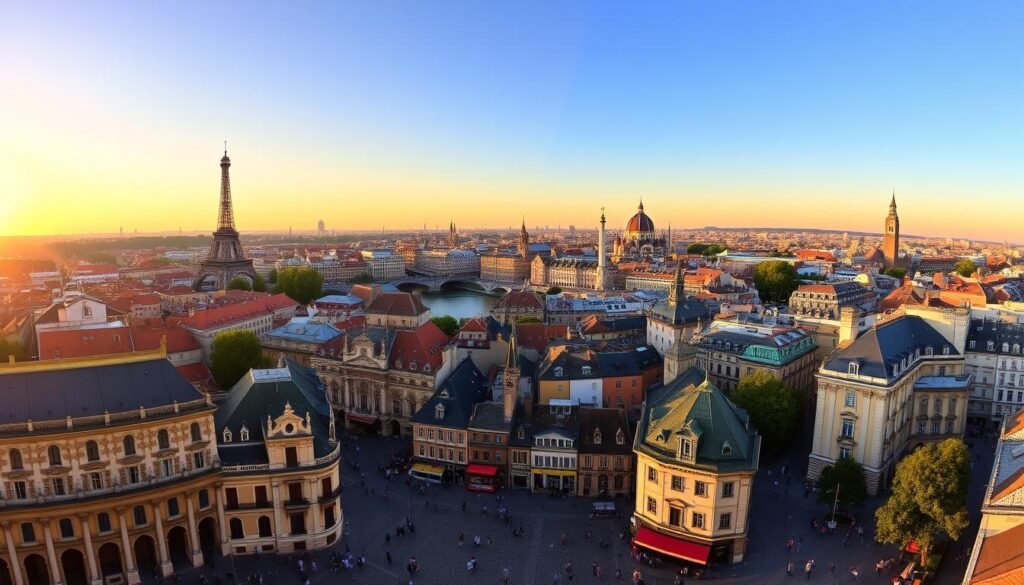Surprising fact: I learned that a single week in the right place can shape your memories for a lifetime — and many travelers spend less than 48 hours in each stop while still leaving enchanted.
I made this guide as a practical, personal list that balances big-name icons and quieter gems. I focus on how to spend your limited time so you see museums, markets, and viewpoints without rushing.
The places I highlight range from Paris neighborhoods and Florence’s Duomo to Venice’s calm canals and Granada’s Alhambra. I share where I stayed, what worked, and how I structure days so you can plan a short trip or link several stops into a longer route.
Use this post as a starting point, then tailor your route around pace and flavor. For a deeper look at my picks and notes, check my round-up of favorites at my favorite amazing cities.
Key Takeaways
- I curated a practical list from firsthand travel experiences.
- Focus on neighborhoods and quick wins to maximize your time.
- Mix famous icons with under-the-radar spots for balance.
- My pacing approach helps link short stays into a smooth trip.
- Expect tips on when to go, where to stay, and how to structure days.
How I Curated This List of Cities in Europe (and Why My Picks Work for a First Time Trip)
Years of quick trips taught me which places reward a short stay with lasting memories. I filtered my notes by a few simple measures so a first time traveler can feel grounded fast.
My simple criteria
I look for vibe, architecture, food, history, and whether a place is easy get around. I favor compact cores where museums, markets, and viewpoints sit close together.You can learn best-time-to-visit-alaska
The “couple days” test
My couple days check asks: what fits into 48-72 hours? Ideally you hit one or two headline sites, wander a signature neighborhood, catch a viewpoint, and eat well without rushing.
- Vibe: Sidewalk cafés and lively markets that settle a visitor quickly.
- Architecture: Visual impact on most blocks so every stroll feels rich.
- Food: Grazing options that enhance exploration, not stop it.
- Practical: Walkable streets or a simple transit system so you spend hours enjoying, not navigating.
Places that pass these tests—like Paris neighborhoods, Florence’s compact core, Venice at dawn, or Ljubljana’s riverside rhythm—earn a spot on this post and my travel list.
Icons You Can’t Miss: Paris, Florence, and Venice
![]()
Some cities carry a concentrated dose of art and atmosphere; Paris, Florence, and Venice do that for me. Each one compresses huge culture into a short day, so you feel the pulse fast.
Paris, France: world-class museums, cafe life, and neighborhood strolls
I split a day between the Musée d’Orsay and Musée de l’Orangerie, then wander the Latin Quarter or Le Marais for café life and photo-ready streets.
The Panthéon and a glance at Notre-Dame make the city’s history immediate while boulangeries keep me moving.
Florence, Italy: Renaissance art, the Duomo, and open-air beauty
The Duomo and Brunelleschi’s dome anchor my time in Florence. I pair the Uffizi or Accademia with a climb to Piazzale Michelangelo for sweeping views.
Wandering the Arno and Ponte Vecchio shows me why Renaissance architecture still feels alive.
Venice, Italy: early-morning magic, winding streets, and timeless canals
Venice rewards early risers. I watch dawn at Piazza San Marco, then lose myself in quiet lanes and slow canal loops.
That unhurried rhythm mixes art, architecture, and local love of place in a compact city.You can learn best-european-countries-to-visit
Underrated Gems I Love: Verona, Vicenza, and Strasbourg
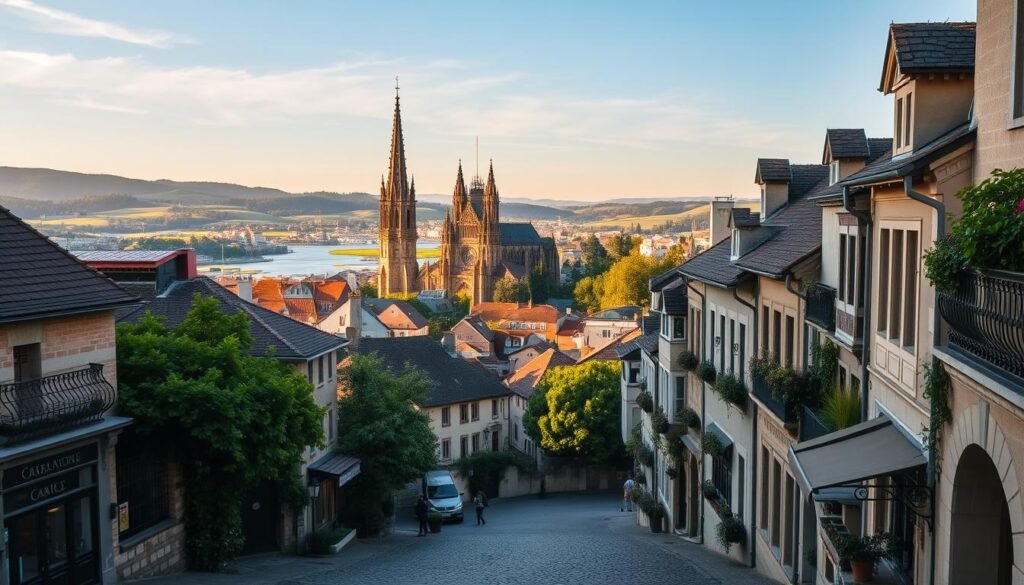
Some towns surprised me with nights and streets that felt instantly cinematic. They give a mix of Roman drama, Palladian calm, and Franco-German flavor in a short span of time.
Verona
I still remember the Arena at dusk—summer opera turns the amphitheater into a festival under the stars. By day I climb Torre dei Lamberti, linger in Piazza Bra and Piazza dei Signori, and find quiet corners along narrow streets.
I always save time for Giardino Giusti and Basilica di Sant’Anastasia—attractions that balance busy piazze with calm gardens and frescoed interiors. For planning day trips from Verona, see my quick guide: day trips from Verona.
Vicenza
Vicenza feels like an open-air gallery of Palladian design. The Loggia del Capitanio stands out as I wander a compact old town where locals cycle by and trattorie line the squares.You can learn best-time-to-visit-morocco
Strasbourg
Strasbourg blends cathedral drama with riverside dining. I pair a cathedral climb with tarte flambée and Alsatian wines, then linger by the river at sunset. Food lovers will find the mix of flavors a sweet surprise.
- Why these places work: Roman ruins, Renaissance lines, and timbered charm in easy reach.
- Practical tip: With limited time, balance headline attractions with slow meals and romantic streets.
Best European Cities to Visit for History, Views, and Culture
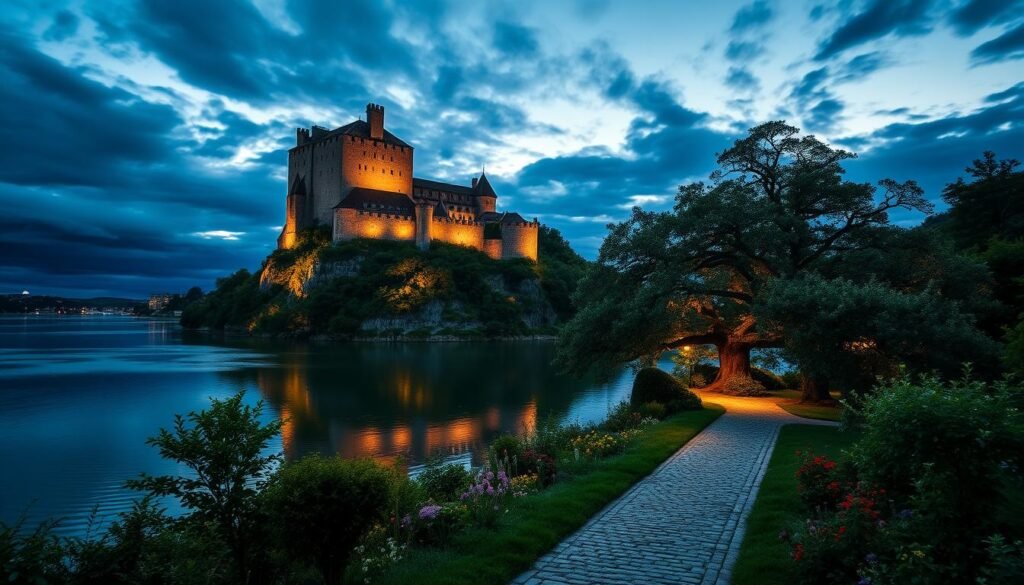
When I want deep history with big views, I head north — where castles perch above streets and parks offer quiet respite.
Edinburgh, Scotland
Edinburgh Castle dominates the skyline; I usually start there for sweeping views over the city.
Then I stroll the Royal Mile, pop into the Scotch Whisky Experience, and later hike Arthur’s Seat for a panoramic reset.
I also love slipping into Dean Village and following the Water of Leith — nature and history blend in a compact capital.
York, England
York feels like a living museum. I walk the intact medieval walls, stand inside York Minster, then get delightfully lost in the Shambles.
I pick one museum — the National Railway Museum or JORVIK Viking Center — and add Museum Gardens for a calm mid‑day break.
Dublin, Ireland
Trinity College’s Book of Kells and Library are essential for me, then I slow down in St Stephen’s Green to watch people and light change.
Dublin City Hall and Dublin Castle offer quiet gardens that balance the lively streets and friendly pubs as evening arrives.
“Each of these cities compresses centuries into walkable cores, making it easy to savor culture without long transfers.”
- My pacing rule: headline sites in the morning, park or viewpoint midday, neighborhood evenings.
- Why they work: castle views, cathedral moments, and approachable streets let you feel history in a day.
Sunlit Southern Charm: Granada and Seville
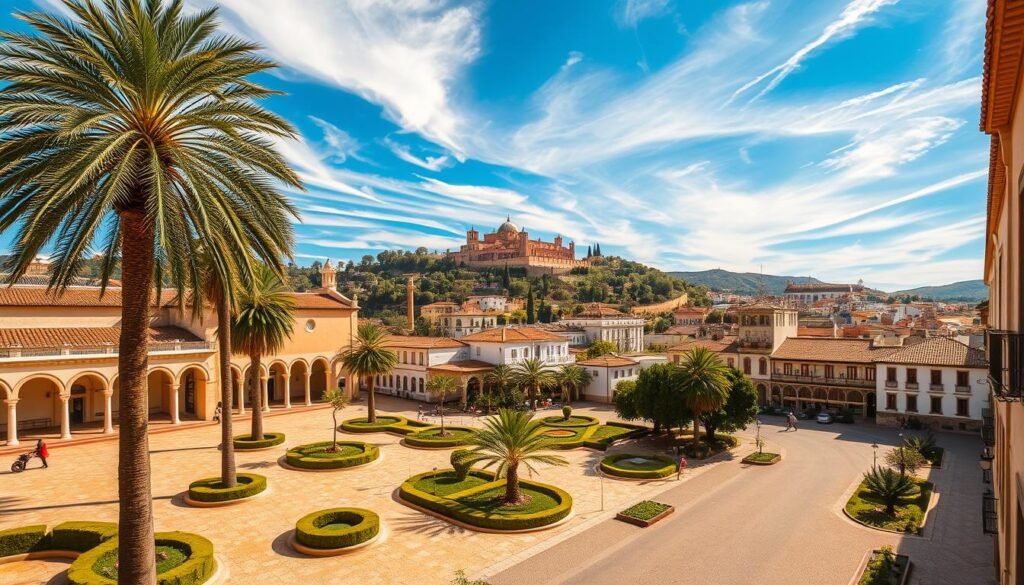
Sun-soaked Andalusia folds art, gardens, and lively streets into two cities that reward slow walking.
Granada is all about the Alhambra and the Generalife Gardens. I book timed entries and leave room to wander tiled halls and courtyards.
I love walking the Albayzín’s whitewashed streets and angling for views back toward the palace as light changes. Granada’s Moorish art repays close looking and slow photos.
Seville essentials
The Real Alcázar feels intimate and vast at once. I pair it with the Cathedral and a climb of the Giralda for sweeping views.
Plaza de España invites a slow loop under tiled arcades. Between sites I graze on tapas—simple, brilliant food—and cap the night with a relaxed bar crawl through atmospheric bars and lanes.
- I schedule a full day for each city and keep pockets of free time to linger.
- Both cities link architecture, gardens, and casual eating into an easy rhythm.
| Site | Highlight | Tip |
|---|---|---|
| Alhambra (Granada) | Courtyards, Generalife gardens | Buy timed tickets; arrive early for softer light |
| Albayzín (Granada) | White streets, viewpoints | Walk slow and angle shots toward the palace |
| Real Alcázar & Giralda (Seville) | Moorish palaces, panoramic city views | Combine with Plaza de España and an evening tapas loop |
“The sunlit corners and tiled details make lingering the best part of these southern stops.”
Small, Scenic, and So Easy to Get Around: Ljubljana
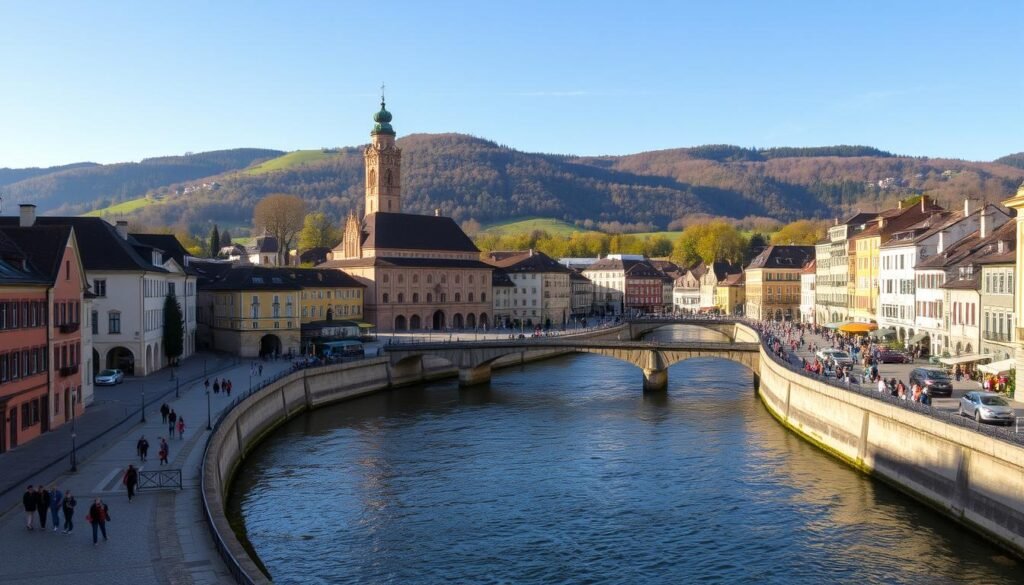
I found Ljubljana’s heart folds into a neat loop that rewards slow walking and quick discoveries. In a short time I could feel its rhythm: riverside cafés, soft pastel facades, and a friendly local pace that invites lingering.
Old town riverside walks
The river banks are the best place to start. I wander from bridge to bridge, pause at cafés, and watch daily life unfold along the water.
The compact center makes it effortless to see a lot without hurrying.
Castle viewpoints and audio guide
I climb up for the castle and take the audio guide; it brings history into focus and the views are wide and satisfying. The hill gives great context for how the town grew around the river.
Central Market and easy logistics
The Central Market is my go-to for a snack and real local flavors. It felt like a genuine slice of daily life rather than a staged attraction.
- For a couple on a short break, Ljubljana’s walkability makes planning light.
- It’s simple, relaxed, and quietly fun.
“Great views, simple logistics, and everyday life blend into a graceful loop.”
More Beautiful European Cities on My Radar (and Why They Tempt Me)
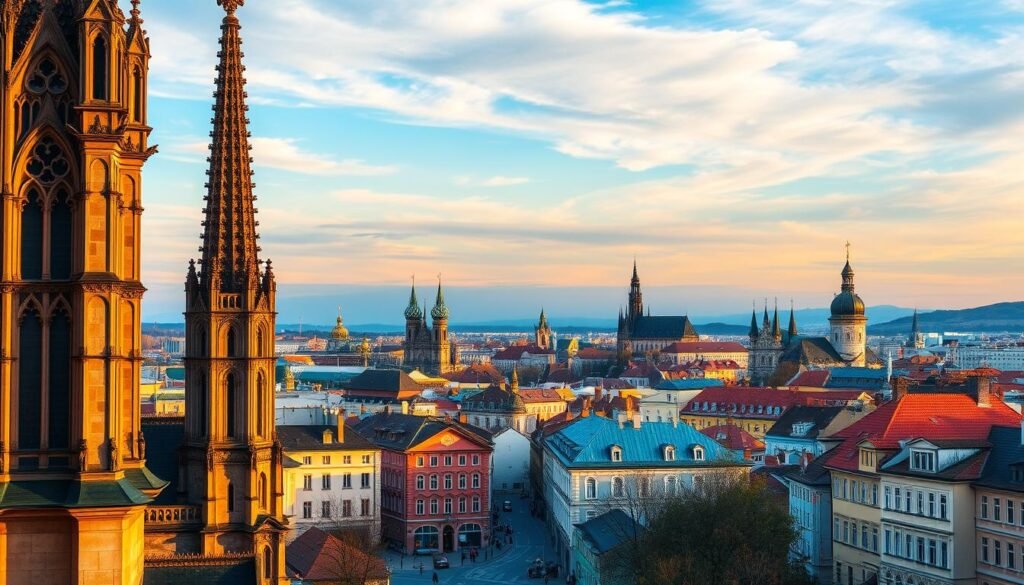
I keep a running list of urban spots that pair striking architecture with simple, walkable days. These places draw me for different reasons: grand cafés, island grids, or quiet lakeside mornings.
Vienna, Prague, and Budapest
Vienna rivals Paris in elegance and earns my attention for its storied coffee house culture and sweeping boulevards.
Prague blends Gothic, Romanesque, and Renaissance layers that make every corner feel historic. Budapest shows off the Danube, spa baths, ruin bars, and a Parliament building that truly stuns.
Amsterdam, Barcelona, and Lisbon
Amsterdam’s canals and narrow canal houses create instant atmosphere at dusk.
Barcelona dazzles with Gaudí’s inventive shapes, while Lisbon rewards wandering in Alfama and hunting viewpoints on colorful hills.
Bruges, Annecy, and Zurich
Bruges feels like a storybook with cobbled lanes and fairy-tale facades.
Annecy sits beside a mirror-like lake and canals that echo Venice in a gentler key. Zurich pairs spotless streets with lakefront calm and excellent urban order.
Munich and Stockholm
Munich offers hearty beer halls and charming architecture across the seasons.
Stockholm spans islands with a design-forward scene and a metro that doubles as public art.
- Clusters I like: Vienna–Prague–Budapest as a central loop, or Amsterdam–Bruges–Ghent for a Benelux sampler.
- Why they work: Each city balances headline sights with simple strolls, so you can enjoy many places within a single trip.
“Over the years I’ve kept notes on neighborhoods and moments—coffee houses in Vienna, Alfama viewpoints in Lisbon, canal sunsets in Amsterdam—and they keep guiding my next short trips.”
| Cluster | Highlight | Why I’d go |
|---|---|---|
| Vienna–Prague–Budapest | Grand squares, river promenades | Café culture, layered architecture, and strong rail links |
| Amsterdam–Barcelona–Lisbon | Canals, Gaudí, hills | Compact cores, photogenic views, varied street life |
| Bruges–Annecy–Zurich | Lakefront old towns | Quiet wandering, scenic water views, relaxed pacing |
How I Plan My Time: Days, Neighborhoods, and Getting Around Each City
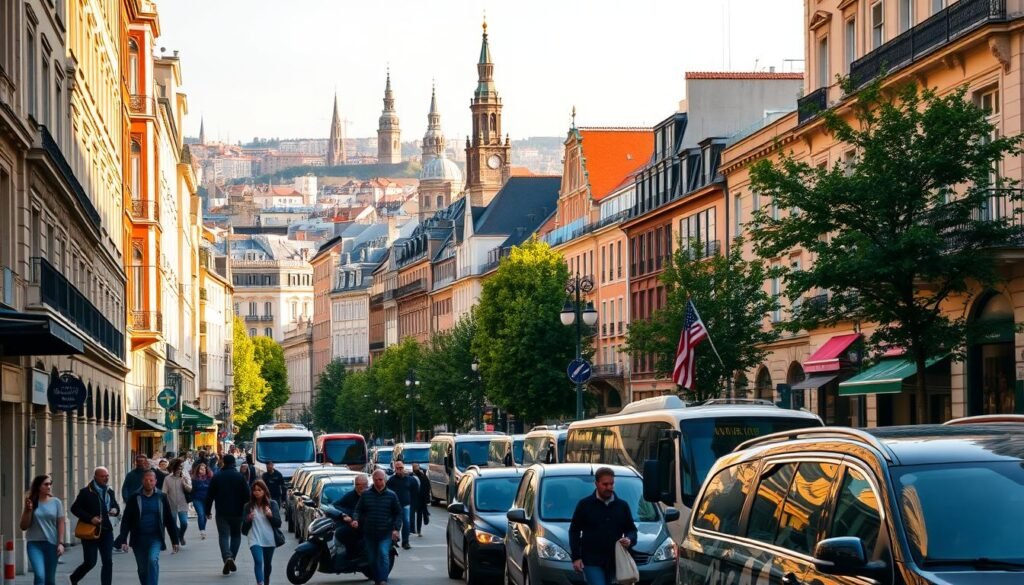
I plan each day so small wins build calm momentum rather than frantic sightseeing.
I favor shoulder months for milder weather and fewer lines. For crowd-beating hours, I aim for openings or late entry times and book timed tickets when needed. This saves a lot of waiting and gives more flexible time for wandering.
Neighborhoods I favor for quick access and local life
I keep a short list of neighborhoods that anchor my days: Paris’ Latin Quarter or Le Marais, Florence near the Duomo, and Dublin around Trinity. A central base means cafes and markets are an easy walk between morning sights and evening meals.
Transit, walkability, and smart day trips
I learn the local transit system on day one, then default to walking when streets reward it. Knowing the ticket system helps me get around the city without stress.
I leave a couple of flexible slots each day—one for a viewpoint, one for a spontaneous find. To add a lot to an itinerary, I use short train hops for day trips to nearby towns like Verona or Strasbourg.
| When | Morning | Evening |
|---|---|---|
| Focus | Headline site at opening | Neighborhood stroll or meal |
| Why | Beat crowds, better light | Relax and absorb local life |
| Tip | Reserve timed entries | Check hours and weather the night before |
“I stack easy wins up front, then add depth as I settle into the city’s rhythm.”
Conclusion
I’ve learned that short trips shine when you choose a few anchors and leave room for surprise. Pick one marquee museum, one viewpoint, and a neighborhood walk. That rhythm lets a city feel like home for a bit.
Use this list as a starter for planning days and rail hops. Mix a capital with a smaller town, favor slow mornings, and ask locals about cafés and markets.
The real reward is simple: architecture, history, food, and streets that invite you to return. Take your time, be curious, and let the world unfold one charming place at a time. strong,


